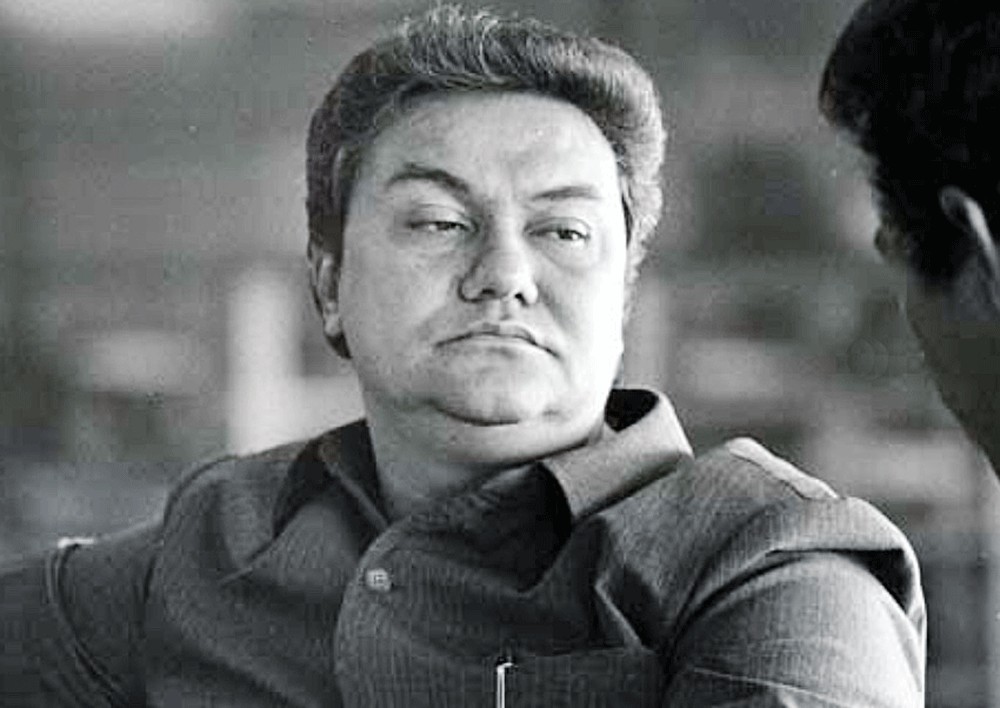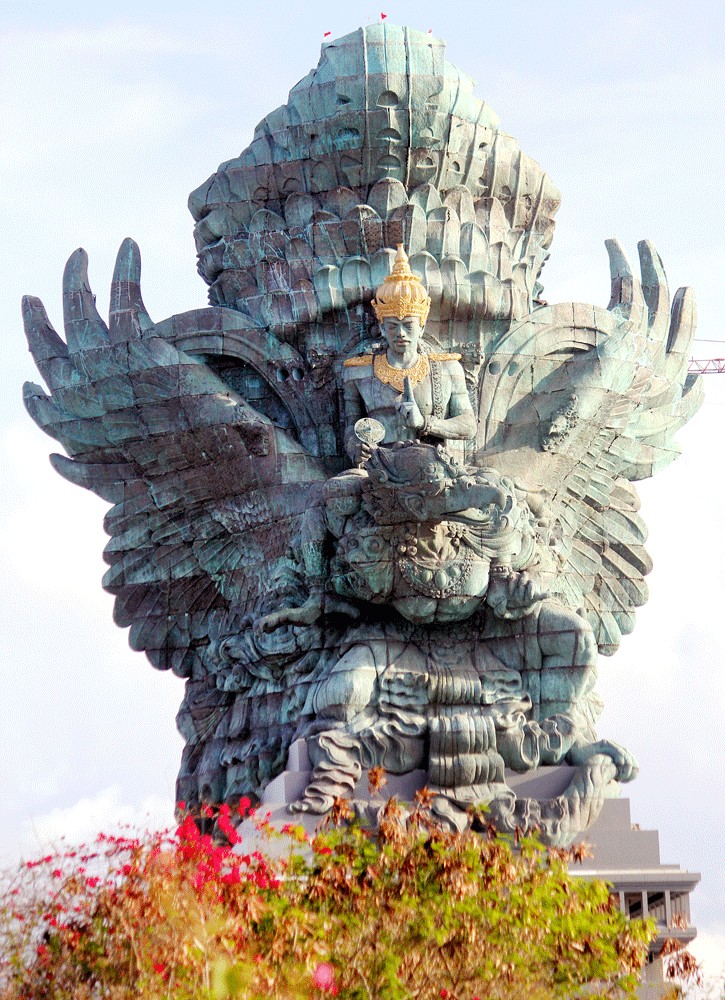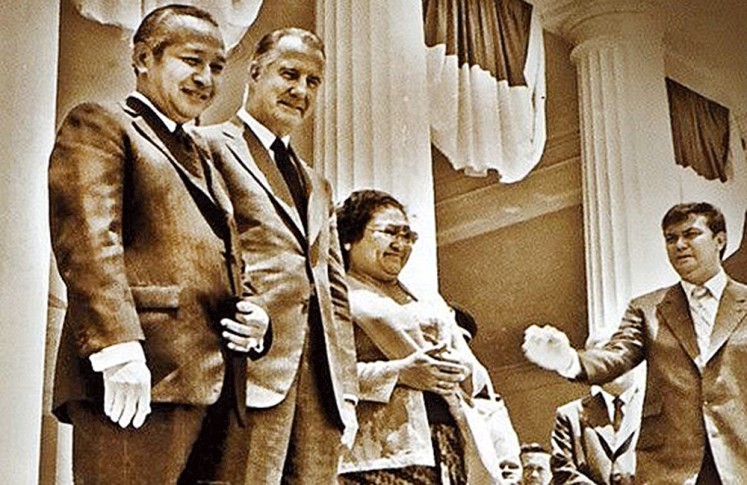Popular Reads
Top Results
Can't find what you're looking for?
View all search resultsPopular Reads
Top Results
Can't find what you're looking for?
View all search resultsJoop Ave: The man behind Garuda Wisnu Kencana
The inauguration of Garuda Wisnu Kencana statue might not have been possible if not for the late and often controversial Joop Ave.
Change text size
Gift Premium Articles
to Anyone
T
he recent inauguration of the gigantic Garuda Wisnu Kencana (GWK) statue in Bali might not have been possible if not for the late and often controversial Joop Ave.
“Ave Caesar, morituri te salutant! ” (Hail Caesar, we’re greeting you before our death!) might have been the last sentence uttered by Joop, Indonesia’s cultural gladiator, before he died on Feb. 5, 2014.
Memories of the cultural role of Joop, the tourism, post and telecommunications minister from 1993 to 1998, have popped up with the completion of the GWK, created by legendary Balinese sculptor Nyoman Nuarta, on the top of Ungasan Hill in Jimbaran, Bali.
“The idea of the GWK image indeed came from Joop Ave and me in 1993. He was a gladiator fighting all out for the erection of this monument. Without his encouragement, this statue would have stayed a mere dream,” Nyoman said.
For the project, Joop always urged that it should be as huge and mighty as possible, while promising to get the necessary funds.
President Joko “Jokowi” Widodo shared Nuarta’s revelation in his message when inaugurating the sculpture on Sept. 22, 2018.
“Without a big idea and without farsightedness, this monument would have never come true,” Jokowi said.
Therefore, the role Joop played should not be forgotten.
Joop, who was born in Yogyakarta on Dec. 5, 1934, is probably one of the most remembered figures from Soeharto’s New Order regime.
Bureaucrats remember him as an energetic and perfectionist worker who observed discipline, while nationalists describe him as a figure knowledgeable about history.
Meanwhile, circles within the Presidential Palace under Soeharto’s era saw Joop as being conversant with culture, and the tourism community honored him with the title Father of Tourism.
In 1979, as the protocol and consular director general of the Home Ministry, he accompanied then-vice president Adam Malik on a visit to Turkey. When the Turkish tourism minister accompanied Adam, Joop mingled with European tourists there to tell them about Indonesian art and culture. He demonstrated his multilingual fluency by speaking Dutch, French and German to visitors from the Netherlands, France and Austria.
Joop, who also spoke Sundanese and Javanese, maintained that arts and culture formed the strength of Indonesian civilization.
“Indonesia’s natural beauty is only an entry gate,” he once said.
Because Joop was passionate about promoting Indonesian arts and culture, he made sure that all parts of the presidential palaces in Jakarta, Bogor and Yogyakarta were completely immersed in the country’s culture when he was the head of the Presidential Palace household staff from 1972 to 1978.
Many people have rated Joop as one of the best Presidential Palace managers in Indonesian history. Some cultural observers also called Joop a cultural ambassador in his own country.
Joop promoted the opening of art shops, galleries and museums in Bali to fulfill the aspirations of Tjokorda Gde Agung Sukawati (former Ubud king).
He also promoted the conservation of heritage buildings in Indonesia, besides gathering dozens of famous photographers to take pictures of Indonesian nature, culture and art in creative frames, which were printed and distributed worldwide with pride.
This way please: Joop (right), as the head of the Presidential Palace staff, provides directives for First Lady Tien Soeharto (second right) and president Soeharto (left). (Courtesy of Agus Dermawan. T/-)On other occasions, Joop also asked Indonesian painters to keep painting unique Indonesian tourist sites and attractions.
“Don’t be afraid to paint in the Mooi Indie [beautiful East Indies] style because the culture and nature of Indonesia are in fact mooi, beautiful,” he assured.
Asked about his flair for culture, Joop said he learned it from the late president Sukarno.
In his 20s as a Foreign Ministry employee, Joop was frequently invited to the palace by Sukarno to help handle protocol affairs, decorate the building and garnish various dishes to be served.
“Bung Karno [Sukarno] noticed my talent and potential to Indonesianize everything in the palace,” recalled Joop.
Heading the Jakarta palace household staff, Joop claimed to learn much from the experiences of his predecessors at presidential palaces all over Indonesia. They included Maj. Gen. Soehardjo Hardjowardojo (who served from 1950 to 1967), Brig. Gen. Soetikno L. (1967 to 1973) and Brig. Gen. Soesidarto (1973 to 1978).
Joop’s enthusiasm at the Presidential Palace and dynamic cultural instinct combined with his authority as an official met with the genius of Nyoman, who was born in Tabanan, Bali in 1951.
The meshing of the exalted idea of Joop and the ardor of Nyoman for the gigantic statue produced a rare and invaluable cultural treasure that is the GWK, which depicts Lord Vishnu riding the mythical bird Garuda, which is also the national emblem of Indonesia.
Sadly, Joop as the initiator had no chance of witnessing the GWK standing tall in all of its glory.













